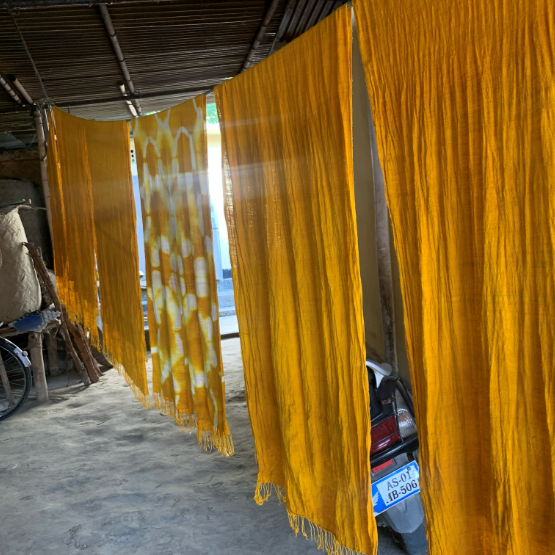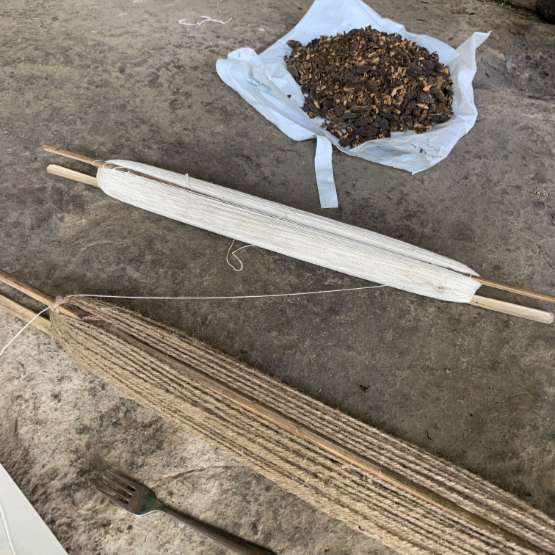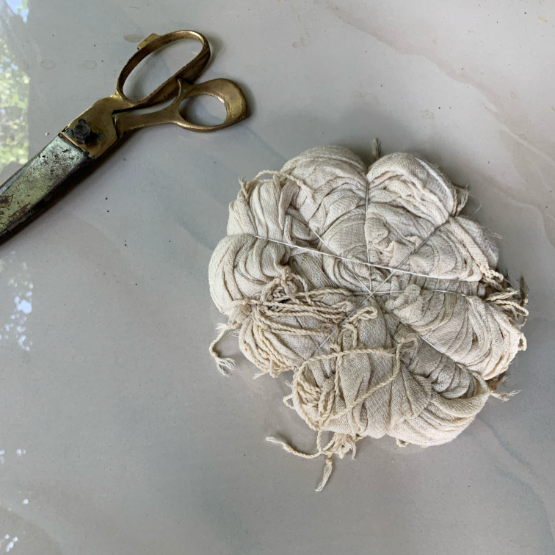Eri Silk
Travels in Assam by Rushi & Manoshi
Eri silk of Assam
Winter is such a wonderful time of the year to travel in India. One winter took us to Assam and Meghalaya, exploring the natural beauty, the fabulous & diverse cuisine, the warmth of the locals and the sheer spectacle of the state’s handloom and handicrafts.
In these travels, we met Naturenomics™ Awardee Narmohan Das from Kamrup district of Assam. He is a staunch proponent of the circular economy in the silk industry and an environmentalist who has many innovations to his name. His work has created opportunities in a community of farmers, weavers, natural dye makers, spinners, and sellers. He has a body of work with Eri silk.

Eri silk, a sustainable and cruelty-free silk made from silkworms, is traditionally farmed and hand loomed in Assam, India. The process involves finding silkworms, extracting the silk cocoons after tribal communities consider them a delicacy, and spinning the silk into yarn.
He has also successfully segregated between Ahimsa Eri silk and regular Eri silk. . Made of silkworms, it is a traditional farming and handloom craft practiced in Assam.
Historically, Eri silk manufacturing involved finding silkworms by tribes and eating the worm which is considered a delicacy and using up the residual cocoon for spinning silk yarn. The silkworm does not complete the cycle of turning into a moth and laying eggs. In regular Eri silk, the moth worms, after feeding on leaves, become cocoons.
After boiling, the cocoons are left to soak in hot water until it cools. Finally, they are rinsed and pounded into flat rounds and set to dry. Once the silk is dry, it is ready to be spun into yarn. If the fabric is to be woven in the natural Eri fibre color, the weaving can begin immediately.
This is the regular Eri silk which employs hundreds of women and men in a cottage industry. However, with the innovations of Normohan Das, the Ahimsa Eri silk got propagated. From India, Ahimsa Eri silk has become a rare but coveted yarn and fabric. Some phenomenal work is being done in Assam and in the Northeast of India on the same.

The making of Ahimsa Eri silk is conjoined with the continuous birth cycle of an Eri Silkworm where an egg becomes a moth that lays an egg who takes on a new life cycle leaving behind a cocoon as a tactile proof of its existence. From this cocoon comes Ahimsa Eri Silk. When a silkworm naturally completes its life cycle, it continues the cycle of Eri Silk. If silkworms do not complete their natural life cycle, there will be no continuity of Eri Silk. Narmohan Das's work in Ahimsa Eri silk is phenomenal because he believes that silk from silkworms can truly be ahimsa only when the silkworm is not consumed as food but is allowed to bloom into a butterfly.
Sericulture involves women who work from their own homes- strongly supporting the mahila gramodyog. It employs women at every level and most sericulture is practiced at home be it rearing, spinning, Dyeing, or weaving. The strong encouragement of growing your own castor plants, using 100% natural dyes which are sourced from local, neighbouring states eg. Lakadong turmeric from Meghalaya for yellow dye, thus enabling 'source local’. The strong desire to involve entire community members to become sericulturists; by sharing and not wasting and most important - the mutual decision to keep the annual limit of production to 1000 metres for the first phase stems from their deeper sensitivity to nature and local culture.
At no point however is Ahimsa eri silk denouncing the traditional, tribal process of acquiring silkworm, mindfully understanding and accepting the food and culture choices of various communities. It's an all-inclusive community where regular and ahimsa-eri silk coexist. Both Eri silk and ahimsa Eri silk thrive peacefully with both processes respecting traditional as well as innovations. It respects people’s food choices cos intolerance to people's food choices is intellectual violence’ thus destroying the all-encompassing philosophy Of ahimsa.

Eri Silk creates an entire eco system of circular economy that benefits a community of farmers, weavers, natural dye makers, spinners, and sellers. The community work has also encouraged women's employment and a deeper sensitivity to nature and local culture.
-Rushi & Manoshi






